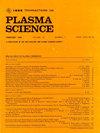巴哈原型车等离子氮化制动盘处理及性能评价
IF 1.5
4区 物理与天体物理
Q3 PHYSICS, FLUIDS & PLASMAS
引用次数: 0
摘要
本研究旨在展示如何提高AISI 1045钢拉制制动盘的表面硬度、耐磨性,并延长制动盘的使用寿命。该制动盘采用20%氢气(H2)和80%氮气(N2)混合气体进行等离子渗氮处理。考察了四种不同渗氮条件下处理时间和温度的影响。条件1持续3 h,温度$450~^{\circ}$ C;条件II持续4 h, $450~^{\circ}$ C;条件III在$500~^{\circ}$ C下持续4 h,条件IV在$400~^{\circ}$ C下持续4 h。处理I-III在0.8 mbar的直流源压力下进行。由于制动盘的复杂几何形状,为了比较效果,在2 mbar的压力下使用脉冲电流源在$400~^{\circ}$ c下持续4小时进行了替代处理。通过表面显微硬度谱,x射线衍射,扫描电子显微镜(SEM),并在半干旱地区联邦农村大学(UFERSA)的baja型越野原型车上进行了现场磨损测试。结果表明,制动盘的性能得到了有效的改善,特别是在条件III和条件IV中,与氮化层的厚度和均匀性直接相关的制动盘磨损显著减少,以及与标准材料相关的显微硬度显著增加,验证了等离子体处理制动盘作为一种技术替代方案。本文章由计算机程序翻译,如有差异,请以英文原文为准。
Treatment and Performance Evaluation of Plasma Nitrided Brake Disks for Baja Prototype
This work aims to demonstrate how to increase the surface hardness, wear resistance and provide a longer service life to a brake disk made of drawn AISI 1045 steel, submitted to plasma nitriding, using a gas mixture of 20% hydrogen (H2) and 80% nitrogen (N2). The influence of treatment time and temperature in four different nitriding conditions were evaluated. Condition I lasted 3 h and at a temperature of $450~^{\circ }$ C; Condition II lasted 4 h at $450~^{\circ }$ C; Condition III lasted 4 h at $500~^{\circ }$ C and condition IV lasted 4 h at $400~^{\circ }$ C. Treatments I-III were carried out at a pressure of 0.8 mbar with a direct current source. For comparative effect due to the complex geometry of the brake disks, an alternative treatment was performed at a pressure of 2 mbar using a pulsed current source with duration of 4 h at $400~^{\circ }$ C. The properties of the nitrided layers obtained in the samples were evaluated by means of surface microhardness profile, X-ray diffractometry, scanning electron microscopy (SEM), and wear test carried out in situ in an off-road prototype of the baja type from Federal Rural University of the Semiarid Region (UFERSA). The results showed an effective improvement in performance, with a significant reduction in disk wear, notably in Conditions III and IV, directly related to the thickness and uniformity of the nitrided layers, as well as to the significant increase in microhardnesses in relation to the standard material, validating the plasma treatment of brake disks as a technological alternative.
求助全文
通过发布文献求助,成功后即可免费获取论文全文。
去求助
来源期刊

IEEE Transactions on Plasma Science
物理-物理:流体与等离子体
CiteScore
3.00
自引率
20.00%
发文量
538
审稿时长
3.8 months
期刊介绍:
The scope covers all aspects of the theory and application of plasma science. It includes the following areas: magnetohydrodynamics; thermionics and plasma diodes; basic plasma phenomena; gaseous electronics; microwave/plasma interaction; electron, ion, and plasma sources; space plasmas; intense electron and ion beams; laser-plasma interactions; plasma diagnostics; plasma chemistry and processing; solid-state plasmas; plasma heating; plasma for controlled fusion research; high energy density plasmas; industrial/commercial applications of plasma physics; plasma waves and instabilities; and high power microwave and submillimeter wave generation.
 求助内容:
求助内容: 应助结果提醒方式:
应助结果提醒方式:


